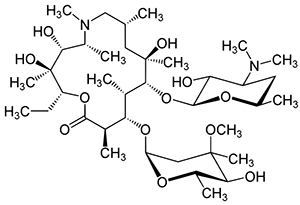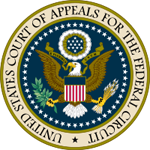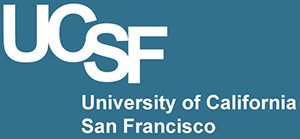On March 25, the Federal Circuit in Dawson v. Dawson affirmed a determination by the Board of Patent Appeals and Interferences that the University of California, San Francisco (UCSF) failed to establish sole conception by Dr. Chandler Dawson of the claimed inventions in two patents assigned to InSite Vision Inc. The case involved an interference between two patents, U.S. Patent Nos. 6,239,113 and 6,569,443, which name Dr. Dawson and Dr. Lyle Bowman as inventors and which are assigned to InSite, and an application which names Dr. Dawson as the sole inventor and which is assigned to UCSF. The patents and application ay issue are directed to a method for topically treating and preventing infections of the eye.
 In 1997, at a meeting of the World Health Organization Alliance for the Elimination of Trachoma, Dr. Dawson, who was employed by UCSF, gave a presentation on the topical use of an antibiotic called azithromycin (at right) to control trachoma (a bacterial infection of the eye). A report of the meeting ("WHO Report") was subsequently released, which included a discussion of Dr. Dawson's presentation. A second document ("WHO document"), which may have been an outline of Dr. Dawson's presentation, provided a similar discussion of the presentation.
In 1997, at a meeting of the World Health Organization Alliance for the Elimination of Trachoma, Dr. Dawson, who was employed by UCSF, gave a presentation on the topical use of an antibiotic called azithromycin (at right) to control trachoma (a bacterial infection of the eye). A report of the meeting ("WHO Report") was subsequently released, which included a discussion of Dr. Dawson's presentation. A second document ("WHO document"), which may have been an outline of Dr. Dawson's presentation, provided a similar discussion of the presentation.
 Shortly after the meeting, Dr. Dawson asked Dr. Kenneth Chern to enlist the assistance of Dr. Bowman, an employee at InSite (a company involved in the research and development of ophthalmic products), in creating a suitable ophthalmic medication with azithromycin that could be applied topically to the eye. Dr. Chern sent 100 mg of azithromycin to Dr. Bowman for formulating as a topical preparation. Three weeks later, after not hearing back from Dr. Bowman, Dr. Chern sent azithromycin to Dr. Charles Leiter, a pharmacist associated with the same foundation as Dr. Chern, to formulate as an ointment or suspension. Dr. Leiter prepared an ointment using a mineral oil and petrolatum carrier and containing 0.5% azithromycin by weight. Upon receipt, Dr. Chern applied some of the ointment to his own eye to determine whether it could be well-tolerated, and informed Dr. Dawson of the results of his experiment. Dr. Dawson subsequently left UCSF to work at InSite, and after joining InSite, was named with Dr. Bowman on a patent application that led to the issuance of the '113 and '443 patents.
Shortly after the meeting, Dr. Dawson asked Dr. Kenneth Chern to enlist the assistance of Dr. Bowman, an employee at InSite (a company involved in the research and development of ophthalmic products), in creating a suitable ophthalmic medication with azithromycin that could be applied topically to the eye. Dr. Chern sent 100 mg of azithromycin to Dr. Bowman for formulating as a topical preparation. Three weeks later, after not hearing back from Dr. Bowman, Dr. Chern sent azithromycin to Dr. Charles Leiter, a pharmacist associated with the same foundation as Dr. Chern, to formulate as an ointment or suspension. Dr. Leiter prepared an ointment using a mineral oil and petrolatum carrier and containing 0.5% azithromycin by weight. Upon receipt, Dr. Chern applied some of the ointment to his own eye to determine whether it could be well-tolerated, and informed Dr. Dawson of the results of his experiment. Dr. Dawson subsequently left UCSF to work at InSite, and after joining InSite, was named with Dr. Bowman on a patent application that led to the issuance of the '113 and '443 patents.
Almost four years after the '443 patent issued, UCSF filed a patent application naming Dr. Dawson as an inventor, and copying the specification and claims from both the '113 and '443 patents in order to provoke an interference. The BPAI declared two interferences between the InSite patents and UCSF's application, naming UCSF as the junior party (and therefore UCSFD bore the burden of proving, by a preponderance of the evidence, that Dr. Dawson alone had conceived of the inventions recited in the counts prior to InSite's March 31, 1999 filing date). The count in Interference 105,719, which tracks claim 3 of the '113 patent, recites:
A process for treating an eye, which comprises: topically applying an aqueous polymeric suspension of an azalide antibiotic, wherein said suspension comprises water, 0.01% to 1.0% of an azalide antibiotic, and 0.1 to 10% of a polymeric suspending agent which is a water swellable water-insoluble cross-linked carboxy-vinyl polymer which comprises at least 90% acrylic acid monomers and 0.1% to 5% crosslinking agent.
The count in Interference 105,729, which tracks claim 1 of the '443 patent, recites:
A process for treating an eye, comprising: topically applying an azalide antibiotic to an eye in an amount effective to treat infection in a tissue of the eye, wherein said topically applying comprises supplying a depot of a composition containing said azalide antibiotic on the eye.
On the issue of conception, the Board determined that UCSF had failed to prove sole conception by Dr. Dawson, finding that that Dr. Dawson did not fully appreciate how his idea was to be implemented in actual practice, and that it was only after Dr. Bowman became involved that "'something' significant happened," leading to the March 1999 filing of Dr. Dawson's and Dr. Bowman's application. UCSF appealed the Board's decision, contending the Board erred in finding that Dr. Dawson did not conceive of the claimed inventions by himself prior to his collaboration with Dr. Bowman.
 In a majority opinion written by Judge Bryson and joined by Judge Wallach, the Federal Circuit began by noting "that the nature of the evidence presented in this case is unusual," as the Court was "asked to decide whether and when an invention formed definitely, permanently, and particularly in the mind of the alleged inventor, but to do so without any testimony from the supposed inventor himself." Instead of providing testimony from Dr. Dawson, UCSF contended that the WHO Report and the WHO document prove Dr. Dawson's conception, and that Dr. Leiter's preparation of an ointment for Dr. Chern provided further corroboration. The Court, however, disagreed with UCSF's contention, stating that "[a]t best, . . . the WHO Report and WHO document announce a general idea, acknowledge many of the difficulties associated with making that idea operative, and offer some thoughts on how one might proceed (including by listing a few potential delivery vehicles)." The Court explained (citations omitted) that:
In a majority opinion written by Judge Bryson and joined by Judge Wallach, the Federal Circuit began by noting "that the nature of the evidence presented in this case is unusual," as the Court was "asked to decide whether and when an invention formed definitely, permanently, and particularly in the mind of the alleged inventor, but to do so without any testimony from the supposed inventor himself." Instead of providing testimony from Dr. Dawson, UCSF contended that the WHO Report and the WHO document prove Dr. Dawson's conception, and that Dr. Leiter's preparation of an ointment for Dr. Chern provided further corroboration. The Court, however, disagreed with UCSF's contention, stating that "[a]t best, . . . the WHO Report and WHO document announce a general idea, acknowledge many of the difficulties associated with making that idea operative, and offer some thoughts on how one might proceed (including by listing a few potential delivery vehicles)." The Court explained (citations omitted) that:
The WHO document is entitled "Potential Use of Topical Azithromycin in Trachoma Control Programmes," and the WHO Report describes Dr. Dawson's presentation as a "preliminary report on the possibility of developing a topical application of azithromycin," while "recommend[ing] that [Dr.] Dawson continue to work with [others] to develop a topical application and report back at the next meeting." A "preliminary" statement about a "possibility" or "potential use," alongside a recommendation for continued work and a "report back" in the future, falls short of a "'definite and permanent idea of the complete and operative invention, as it is hereafter to be applied in practice.'"
Stating that "[t]he inadequacy of UCSF's showing is equally clear in the context of the specific interference counts," the Court noted that UCSF's evidence failed to establish conception of the specific concentrations in the '719 count, and further, that UCSF failed to establish that Dr. Dawson on his own determined "an amount effective to treat infection in a tissue of the eye" as recited in the '729 count.
The Court also noted that the ointment prepared by Dr. Leiter for Dr. Chern did not establish that Dr. Dawson alone conceived of the subject matter of the counts because "[t]here is no evidence that Dr. Dawson instructed Dr. Chern to contact Dr. Leiter or otherwise had any direct connection to the preparation of the ointment."
 On appeal, UCSF argued that the Board's decision on conception was infected by several errors in claim construction and admission of evidence. In response to UCSF's argument that the preamble of the '719 count should not have been read as limiting, and that treatment can be proactive and can thus occur absent an active infection, the Court countered that "[t]he proper meaning and scope of the preamble . . . is irrelevant to our conclusion that UCSF failed to prove sole conception by Dr. Dawson." In response to UCSF's argument that the Board erred in considering statements from the specifications of the '113 and '443 patents on the ground that those statements were inadmissible hearsay, the Court noted that "UCSF adopted the words in the '113 and '443 patents as its own when it 'copied' those words into the patent application that provoked these interferences." In response to USCF's argument that the Board erred by failing to consider statements made by InSite in an opposition to a European patent application concerning the topical use of azithromycin (InSite had stated in opposition proceedings that the WHO document "disclos[es] . . . why topical azithromycin preparations for eye treatment are highly desirable" and provides "a concrete disclosure [of] how such preparations can be obtained" and "suggestions [on] how [they] could be made"), the Court determined that the Board did not abuse its discretion by following its general rule against giving controlling weight to documents from foreign patent proceedings. The Court also pointed out that the Board had properly noted that the instant case involved the issues of conception and reduction to practice and not lack of novelty or inventive step, the latter of which were at issue in the opposition.
On appeal, UCSF argued that the Board's decision on conception was infected by several errors in claim construction and admission of evidence. In response to UCSF's argument that the preamble of the '719 count should not have been read as limiting, and that treatment can be proactive and can thus occur absent an active infection, the Court countered that "[t]he proper meaning and scope of the preamble . . . is irrelevant to our conclusion that UCSF failed to prove sole conception by Dr. Dawson." In response to UCSF's argument that the Board erred in considering statements from the specifications of the '113 and '443 patents on the ground that those statements were inadmissible hearsay, the Court noted that "UCSF adopted the words in the '113 and '443 patents as its own when it 'copied' those words into the patent application that provoked these interferences." In response to USCF's argument that the Board erred by failing to consider statements made by InSite in an opposition to a European patent application concerning the topical use of azithromycin (InSite had stated in opposition proceedings that the WHO document "disclos[es] . . . why topical azithromycin preparations for eye treatment are highly desirable" and provides "a concrete disclosure [of] how such preparations can be obtained" and "suggestions [on] how [they] could be made"), the Court determined that the Board did not abuse its discretion by following its general rule against giving controlling weight to documents from foreign patent proceedings. The Court also pointed out that the Board had properly noted that the instant case involved the issues of conception and reduction to practice and not lack of novelty or inventive step, the latter of which were at issue in the opposition.
Writing in dissent, Judge Reyna stated that:
The record before us demonstrates that Dr. Dawson possessed a definite and permanent idea of his complete and operative invention when, in the summer of 1997, he delivered a related presentation at a conference of the World Health Organization ("WHO"). At that time, Dr. Dawson was employed by UCSF, not InSite. Consequently, I find that Dr. Dawson, through UCSF, satisfied his burden of demonstrating prior conception.
The dissent continued by asserting that the WHO Report and WHO document teach each of the limitations of the '729 count, and establish that he had possession of each recited feature. In particular, the WHO references disclose (1) treating an eye, (2) topically applying an azalide antibiotic (i.e., azithromycin) (3) an effective dose ("Dr. Dawson suggested that his azithromycin formulation would use the same dosage known for erythromycin," and the dose "0.5% by weight[] is used throughout Dr. Dawson's patent as a preferred formulation), (4) supplying a depot containing the azalide antibiotic ("[b]oth references contain the same table listing five alternative delivery depots, one of which is [InSite's] Durasite"). The dissent concluded that "Dr. Dawson's WHO presentation and the accompanying report disclose each element of at least the '729 count, and as such, the two WHO references are sufficient to demonstrate Dr. Dawson's prior conception."
With respect to Dr. Chern's experiment with Dr. Leiter's ointment, the dissent explained that:
In the interference proceeding, the Board considered whether Dr. Chern's experiment showed reduction to practice before the critical date. The Board held that Dr. Chern's experiment could not be reduction to practice because Chern had not applied the ointment to an actual infection. The Board based its determination on its construction of "treating" an eye, which it construed as "retarding or suppressing infection in a tissue of" an eye. Because Dr. Chern had not applied the ointment to treat an actual infection, the Board held that Dr. Chern did not reduce Dr. Dawson's invention to practice. The Board erred in two fundamental aspects. First, the term "treating an eye" in the preamble of the count is not limiting. Second, "treating an eye" does not require an actual infection.
The dissent concluded by stating that:
The question is: because Dr. Dawson's WHO presentation demonstrated conception and Dr. Chern's experiment demonstrated reduction to practice, what is left to establish inventorship? The majority opinion leaves open for interpretation whether commercialization is required for full conception.
But conception does not require commercialization, nor does commercialization establish initial invention. On the contrary, the record shows that Dr. Dawson conceived his invention at UCSF. He turned to Dr. Bowman at InSite only for assistance in commercializing his invention.
Dawson v. Dawson (Fed. Cir. 2013)
Panel: Circuit Judges Reyna, Bryson, and Wallach
Opinion by Circuit Judge Bryson; dissenting opinion by Circuit Judge Reyna